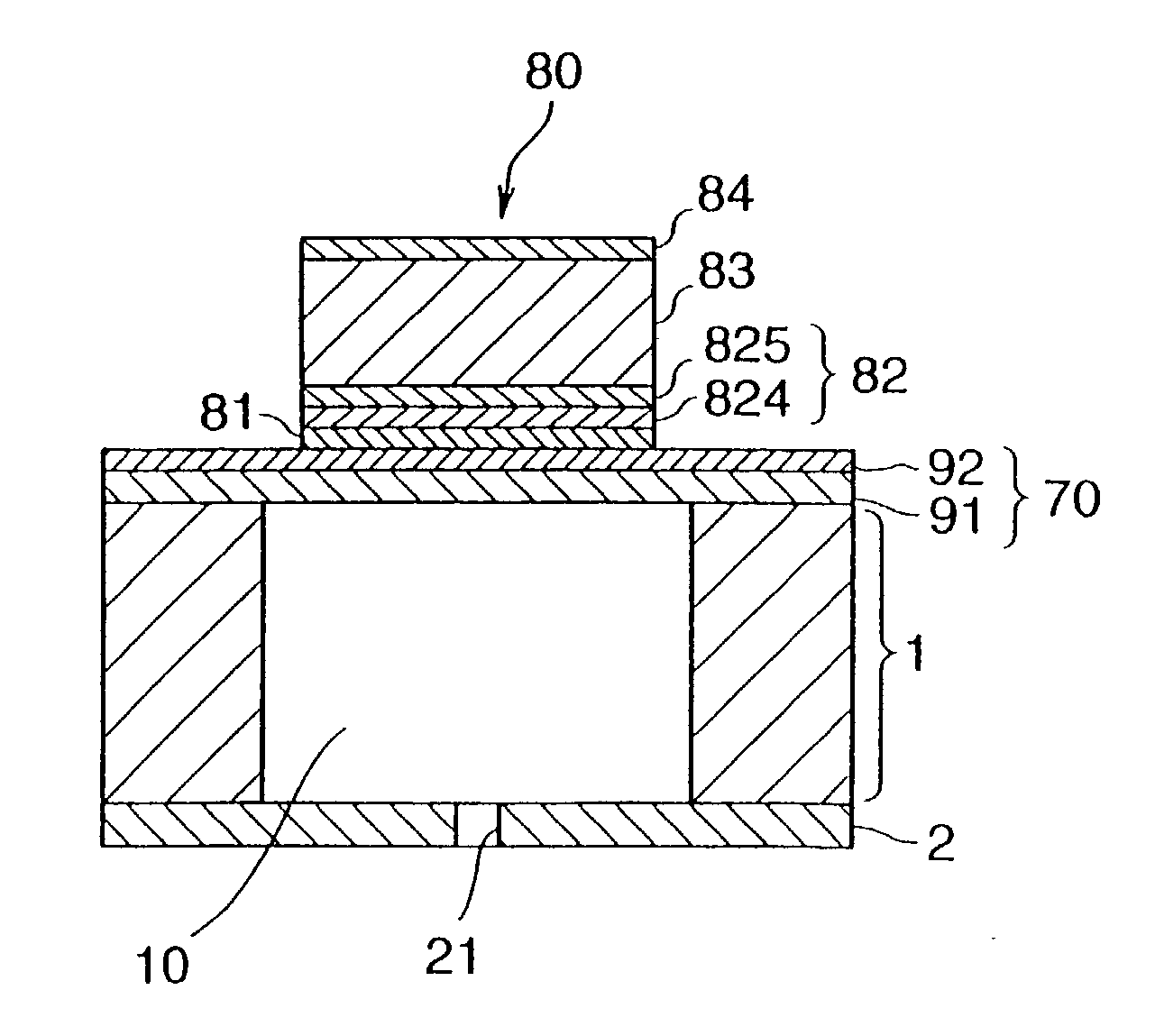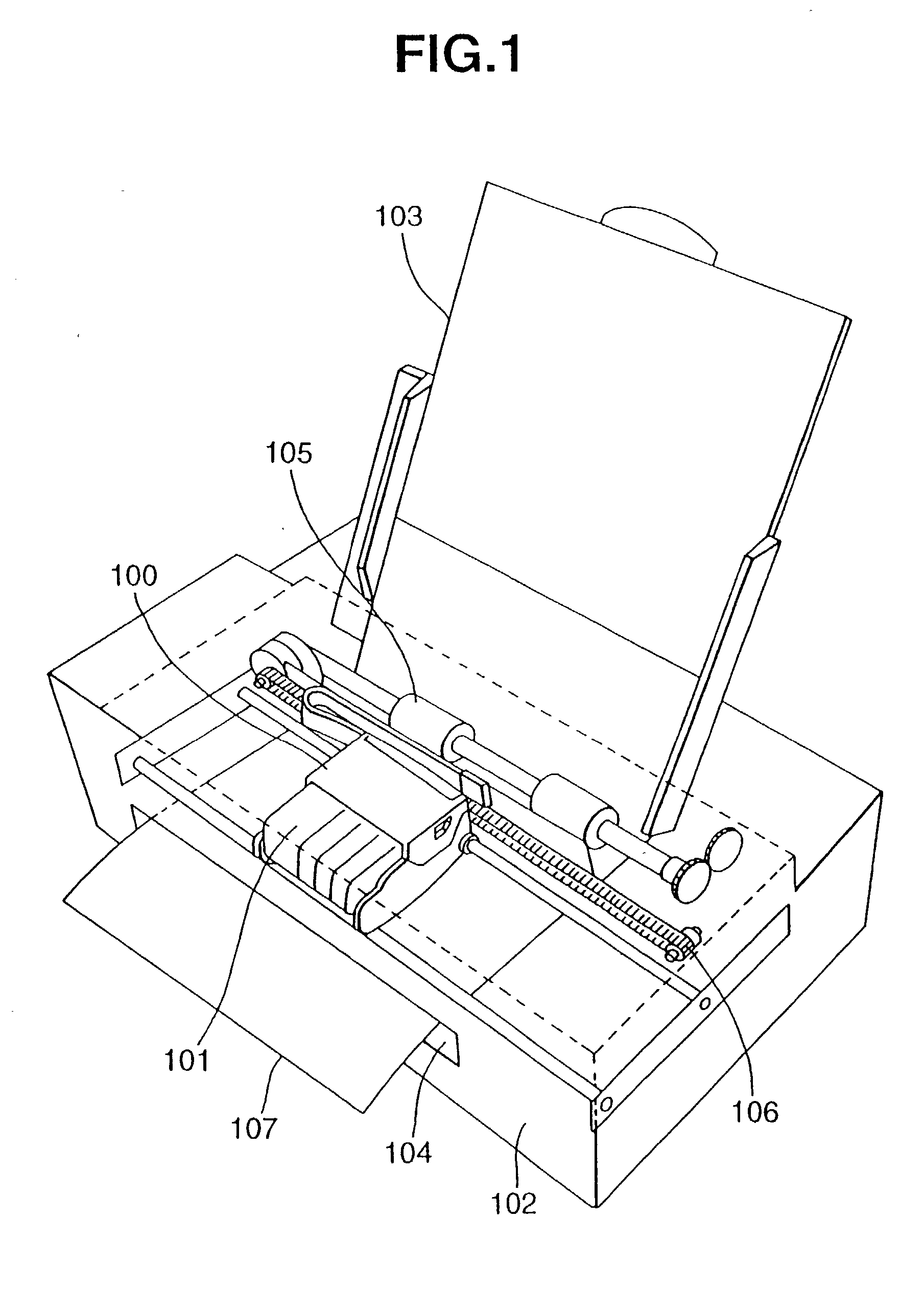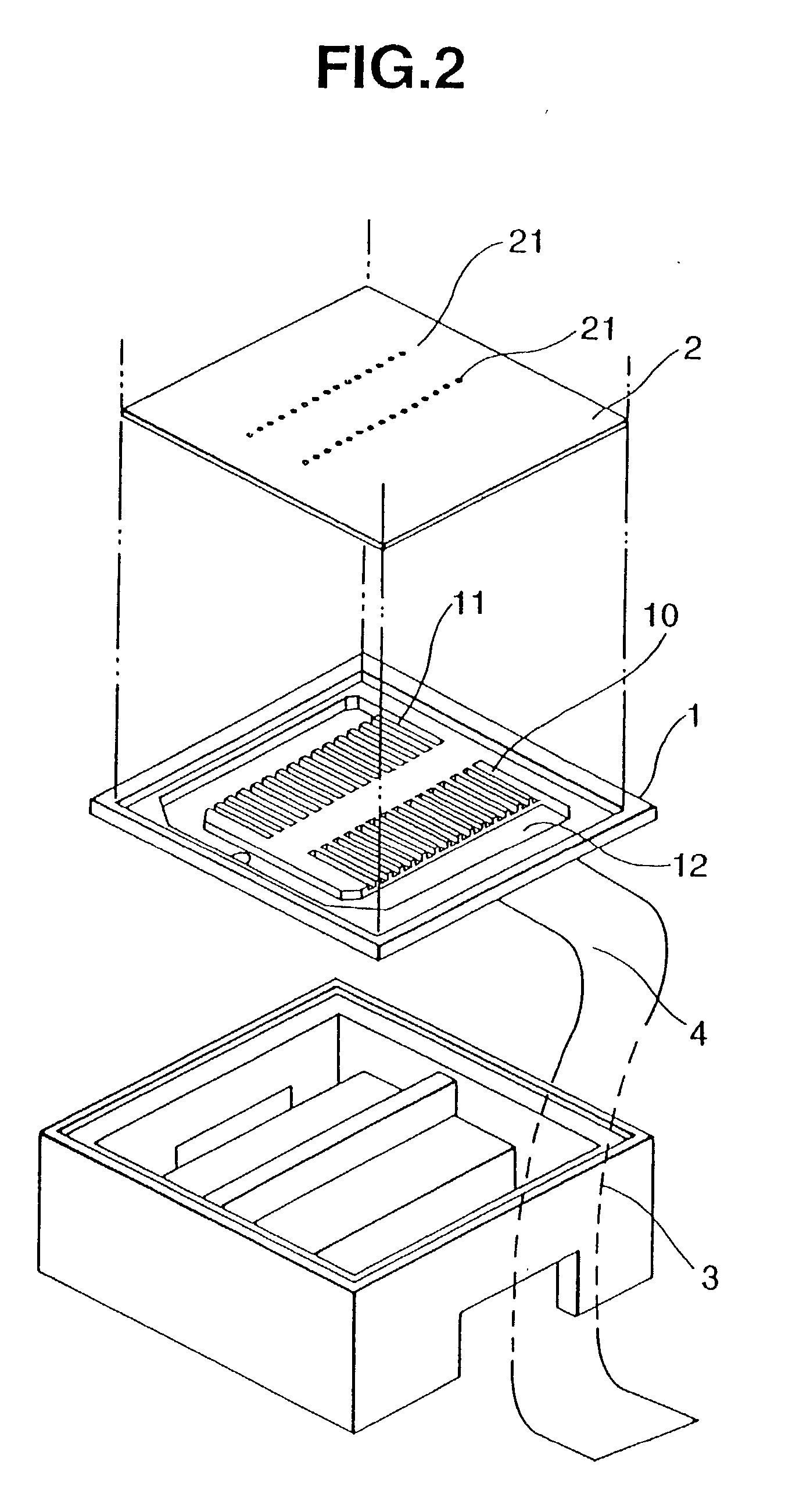Method for manufacturing ferroelectric thin film device, ink jet recording head, and ink jet printer
a technology of ferroelectric thin film and recording head, which is applied in the direction of printing, nanotechnology, transistors, etc., can solve the problems of difficult to control the orientation of a ferroelectric thin film according to the intended application of the ferroelectric thin film, the bottom electrode took in oxygen and swelled in the course of the baking of the pzt film, and the bottom electrode became hard and brittl
- Summary
- Abstract
- Description
- Claims
- Application Information
AI Technical Summary
Benefits of technology
Problems solved by technology
Method used
Image
Examples
embodiment 2
[0101] Embodiment 2 of the Invention
[0102] A ferroelectric thin film has an extremely large dielectric constant, ranging from a few hundred to a few thousand, and when used for the insulating film of a capacitor, the resulting capacitor has a small surface area and large capacity that are favorable for circuits of large-scale integration. A ferroelectric thin film has spontaneous polarization, and because the polarization direction can be inverted by the action of an external electrical field, this characteristic can be utilized to manufacture a nonvolatile memory. An FRAM in which a ferroelectric thin film such as this is used as the capacitor insulating film has numerous advantages over a conventional nonvolatile memory, such as better nonvolatility, higher operating speed, lower energy consumption, and more rewrites.
[0103] This embodiment pertains to a technique in which a ferroelectric thin film device is utilized as a capacitor for an FRAM memory cell. In specific terms, a film...
embodiment 3
[0108] Embodiment 3 of the Invention
[0109] This embodiment pertains to a technique for manufacturing a ferroelectric thin film device in which iridium alone is used for the bottom electrode. With this embodiment, a bottom electrode composed of iridium alone is formed over a surface preparation layer composed of zirconium oxide. A titanium layer (titanium nucleus), which is the element that constitutes the ferroelectric thin film (piezoelectric film), is then laminated over the bottom electrode, and the thickness of the titanium layer is adjusted to about 15 to 30 nm, which prevents the admixture of oxygen into the bottom electrode during the baking of the ferroelectric thin film in a sol-gel method.
WORKING EXAMPLE
[0110] The steps for manufacturing the electromechanical transducer are more or less the same as the electromechanical transducer manufacturing steps described in Embodiment 1, and the following description will focus on the differences.
[0111] First, as shown in FIG. 3A, a ...
embodiment 4
[0118] Embodiment 4 of the Invention
[0119] This embodiment relates to the bottom electrode of an electromechanical transducer with which adhesion to the installation surface can be enhanced without compromising the piezoelectric characteristics.
[0120] FIG. 9 is a cross sectional diagram illustrating the layer structure when the electromechanical transducer pertaining to this embodiment is formed over an installation surface. As shown in the figure, an electromechanical transducer 40 is produced by the successive lamination of an adhesive layer 41, a bottom electrode 42, an anti-diffusion layer 43, a ferroelectric thin film (piezoelectric film) 44, and a top electrode 45 over the installation surface. There are no particular restrictions on the installation surface, but in this embodiment it corresponds to the diaphragm of an ink jet recording head (for instance, a silicon oxide film or a laminate structure of a silicon oxide film layer and a zirconium oxide film).
[0121] The adhesive...
PUM
| Property | Measurement | Unit |
|---|---|---|
| thickness | aaaaa | aaaaa |
| thickness | aaaaa | aaaaa |
| thickness | aaaaa | aaaaa |
Abstract
Description
Claims
Application Information
 Login to View More
Login to View More - R&D
- Intellectual Property
- Life Sciences
- Materials
- Tech Scout
- Unparalleled Data Quality
- Higher Quality Content
- 60% Fewer Hallucinations
Browse by: Latest US Patents, China's latest patents, Technical Efficacy Thesaurus, Application Domain, Technology Topic, Popular Technical Reports.
© 2025 PatSnap. All rights reserved.Legal|Privacy policy|Modern Slavery Act Transparency Statement|Sitemap|About US| Contact US: help@patsnap.com



